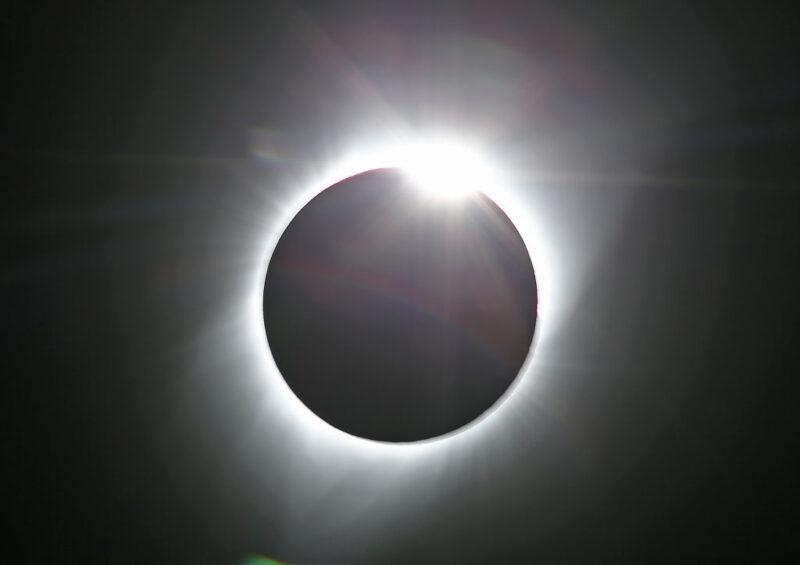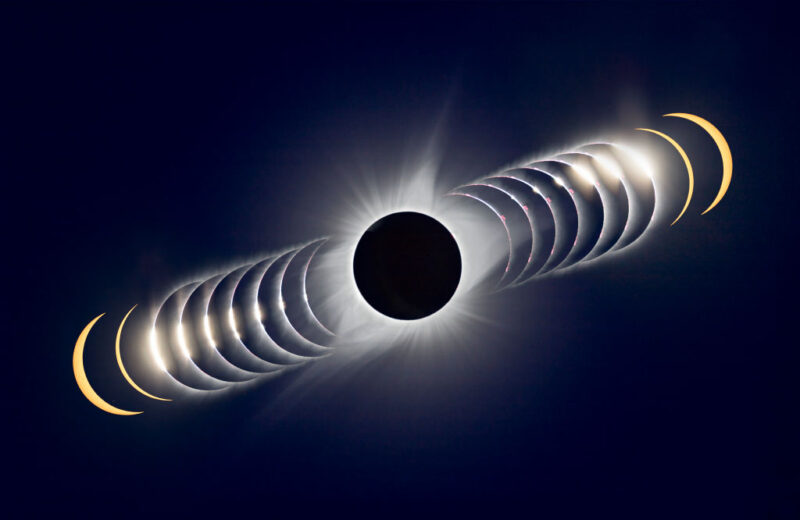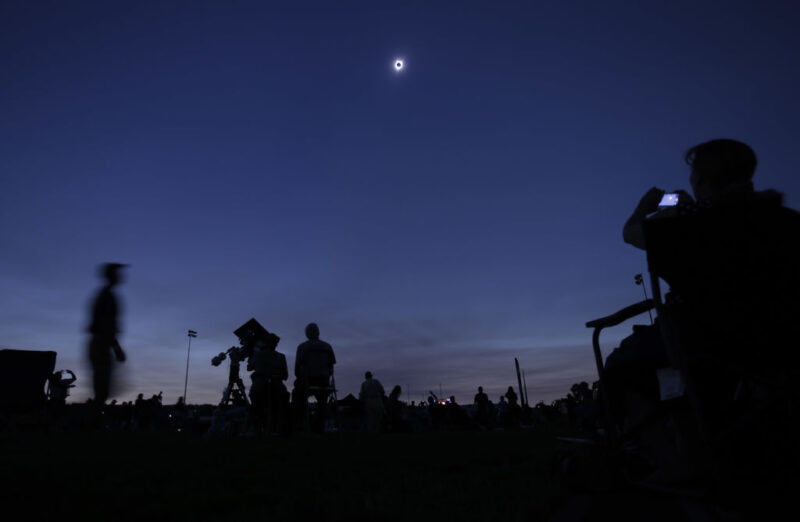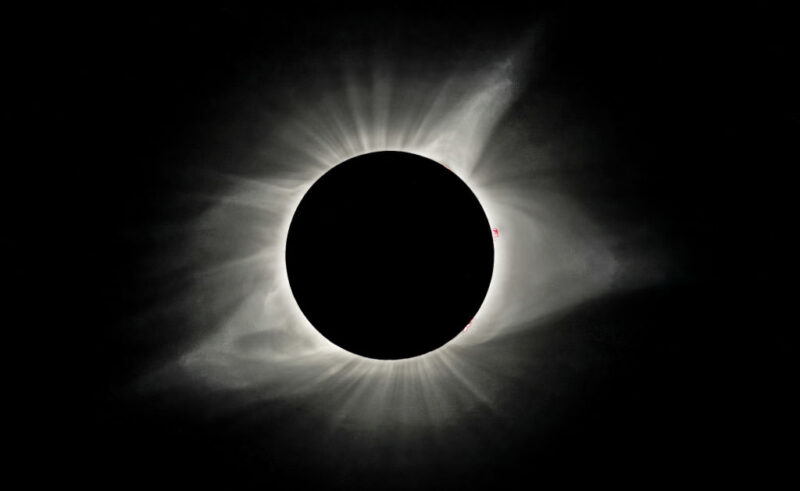What We Know About the 2024 Total Eclipse Over North America
On April 8, 2024, a large swath of North America will bear witness to one of the most astonishing and awe-inspiring solar events: a total eclipse. While not uncommon, such a phenomenon doesn’t occur every day, which means excitement is beginning to build. Here’s what we currently know about the total eclipse, with tips on how to best prepare to view it!
What is a total solar eclipse?

According to NASA, a total solar eclipse is when the Moon passes between the Earth and Sun, completely blocking the latter and darkening the sky. While many assume this plunges the Earth into a night-like state, it actually looks more like dusk or dawn.
Depending on the weather conditions – for example, if there’s any cloud cover – those looking up at the sky will be able to view the Sun’s outer atmosphere around the Moon, making it appear as though the latter is glowing.
Reaching ‘totality’

A total solar eclipse occurs in several stages. The beginning is known as “first contact” and it’s when the Moon begins to cover the Sun. This is followed by a partial eclipse, when the Sun is semi-blocked by the Moon and takes on a crescent shape.
As the Moon continues to pass between the Sun and Earth, other phenomena occur. “Bailey’s Beads” are rays of light that appear around the edge of the Moon and signal the upcoming appearance of the “Diamond Ring.” This occurs at the beginning and end of totality and looks a single bright spot at the edge of the Moon – similar to the glint of a diamond!
It should be noted that the point of totality is the only time you can look at the Sun without eye protection.
‘Great American Eclipse’

The last total solar eclipse experienced over North America occurred on August 21, 2017. Dubbed the “Great American Eclipse,” it was viewable across the entirety of the United States. To celebrate the phenomenon, several institutions held viewing parties that were attended by thousands – Bill Nye the Science Guy was even present at one!
Those outside of the US experienced a partial eclipse, depending on their location and time zone. To commemorate it, the US Postal Service released a special stamp, which changed appearance when exposed to body heat.
When and where will the 2024 total eclipse occur?

As aforementioned, the 2024 total eclipse will occur over North America on April 8. According to NASA, it will begin over the South Pacific, before crossing over Mexico, the US and Canada. The first continental viewings will likely begin around 11:07 AM PST.
For America, in particular, NASA states that those in Texas will be the first to observe the total solar eclipse, after which it will cross over “Oklahoma, Arkansas, Missouri, Illinois, Kentucky, Indiana, Ohio, Pennsylvania, New York, Vermont, New Hampshire and Maine.”
Canadians living in Southern Ontario, Quebec and the Maritime provinces will be able to observe the full eclipse. However, those in Manitoba and the western provinces won’t be privy to the sight – instead, they’re likely to experience a partial eclipse.
Keep your eyes safe from the Sun

While it’s exciting to view a total solar eclipse first hand, doing so without protection can be incredibly dangerous to your eyes. Think about it – you’re looking directly at the sun, which is an incredibly bright object. Doing so allows for ultraviolet light to hit your retina, which, as the Australian Academy of Science explains, burns the exposed tissue.
While short-term damage can be compared to a sunburn on your eyes, the long-term effects can be life-altering. Development of what’s known as “solar retinopathy” – a blind spot in your central vision – is possible. While the majority recover from the short- and long-term impacts of such damage, some never do.
This is why NASA recommends donning eclipse glasses. These are different than typical sunglasses, and are designed with special standards in mind, meaning they’re “thousands of times darker.” There are a number of fakes on the market, so it’s important to inspect your pair for the “ISO 12312-2” marking.
More from us: Marine Biologists Made Unexpected Discovery Off the Coast of Sri Lanka
If you don’t have eclipse glasses, you can also use an old-school viewing method: the pinhole projector. As NASA explains, this “has a small opening (for example, a hole punched in an index card) and projects the image of the Sun onto a nearby surface.” Given the Sun will be at your back, you’re able to safely view the projected image.





